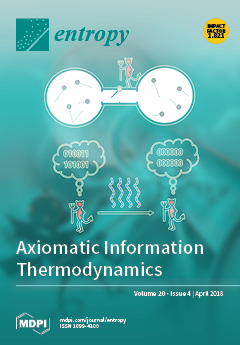A relation is established in the present paper between Dicke states in a
d-dimensional space and vectors in the representation space of a generalized Weyl–Heisenberg algebra of finite dimension
d. This provides a natural way to deal with the separable and
[...] Read more.
A relation is established in the present paper between Dicke states in a
d-dimensional space and vectors in the representation space of a generalized Weyl–Heisenberg algebra of finite dimension
d. This provides a natural way to deal with the separable and entangled states of a system of
symmetric qubit states. Using the decomposition property of Dicke states, it is shown that the separable states coincide with the Perelomov coherent states associated with the generalized Weyl–Heisenberg algebra considered in this paper. In the so-called Majorana scheme, the qudit (
d-level) states are represented by
N points on the Bloch sphere; roughly speaking, it can be said that a qudit (in a
d-dimensional space) is describable by a
N-qubit vector (in a
N-dimensional space). In such a scheme, the permanent of the matrix describing the overlap between the
N qubits makes it possible to measure the entanglement between the
N qubits forming the qudit. This is confirmed by a Fubini–Study metric analysis. A new parameter, proportional to the permanent and called
perma-concurrence, is introduced for characterizing the entanglement of a symmetric qudit arising from
N qubits. For
(
), this parameter constitutes an alternative to the concurrence for two qubits. Other examples are given for
and 5. A connection between Majorana stars and zeros of a Bargmmann function for qudits closes this article.
Full article






